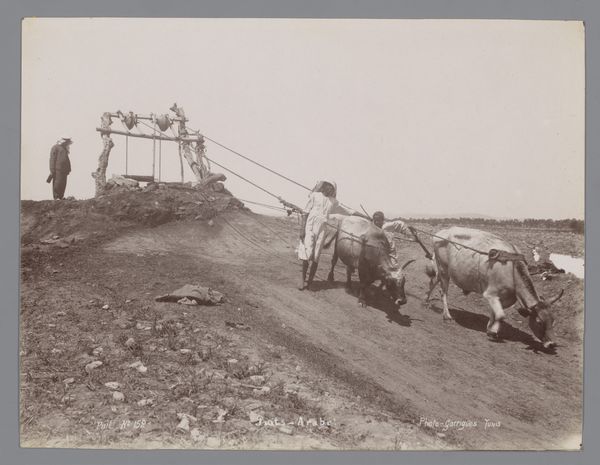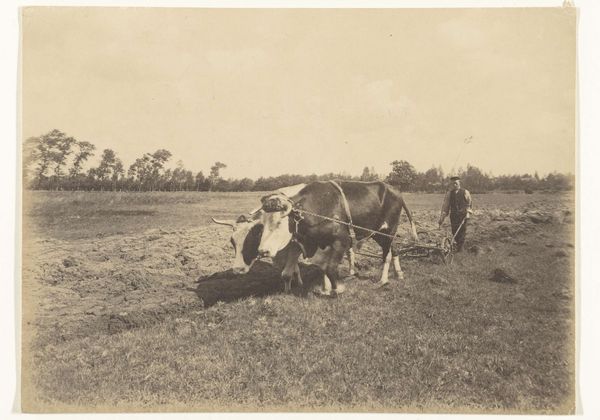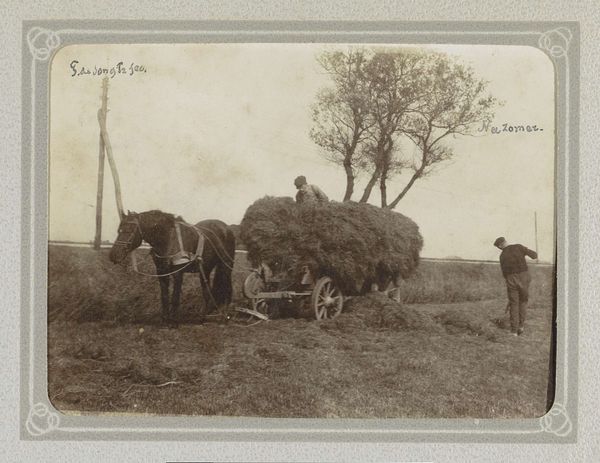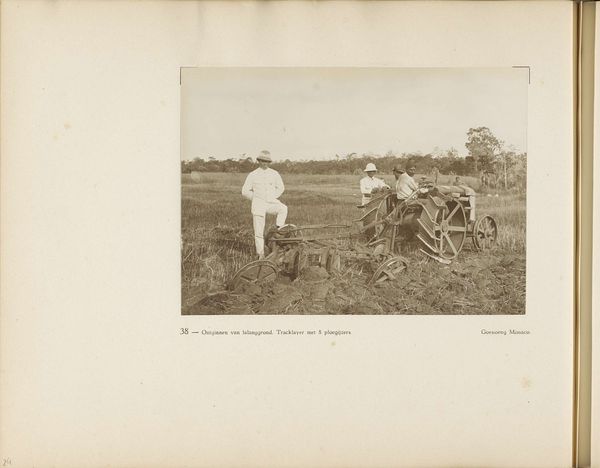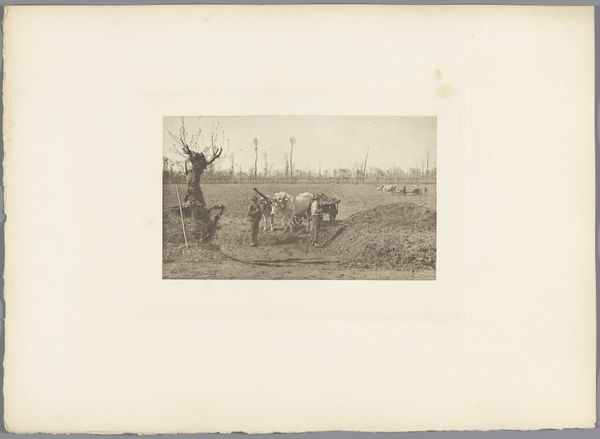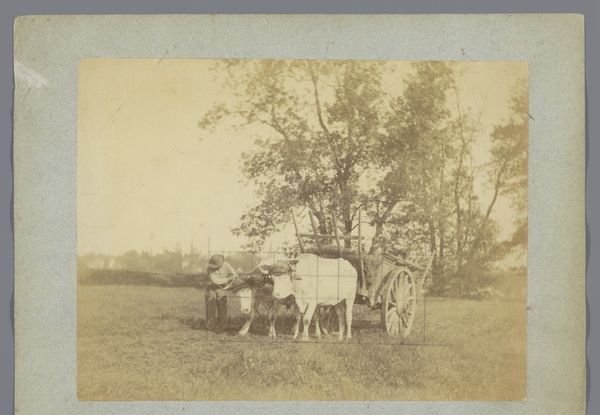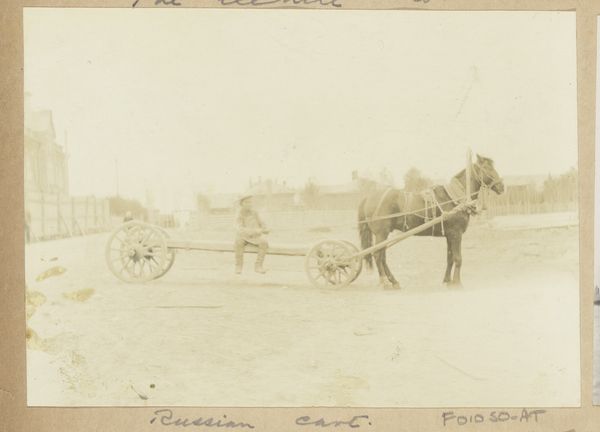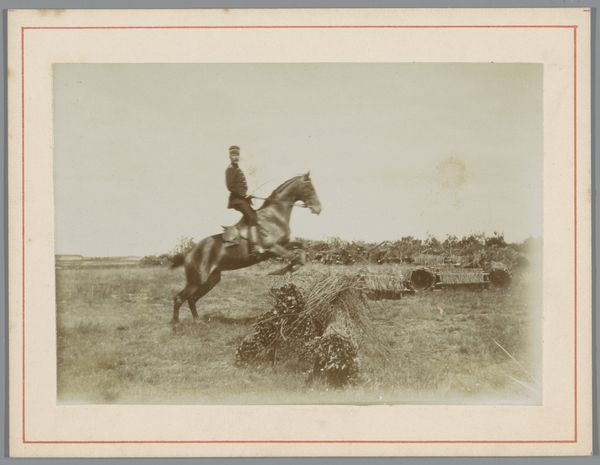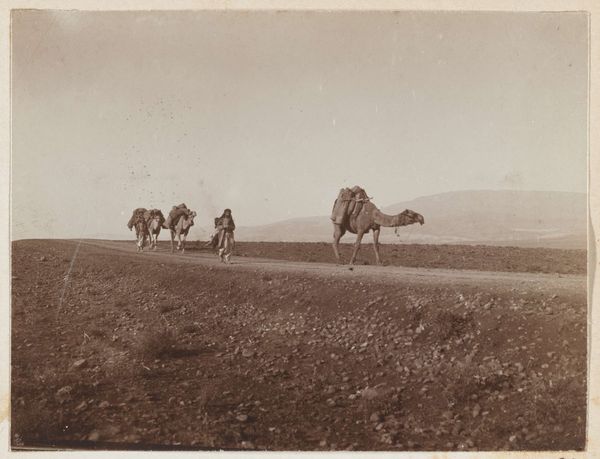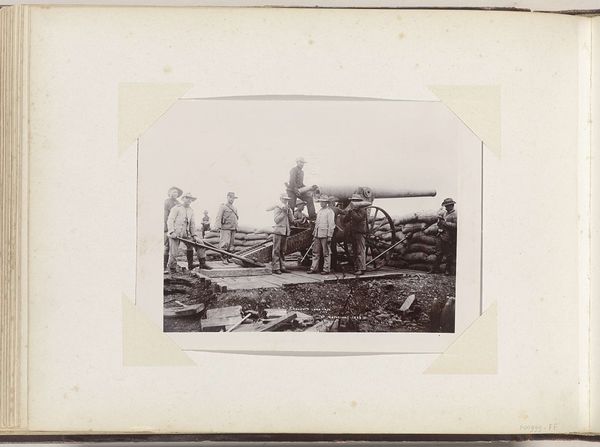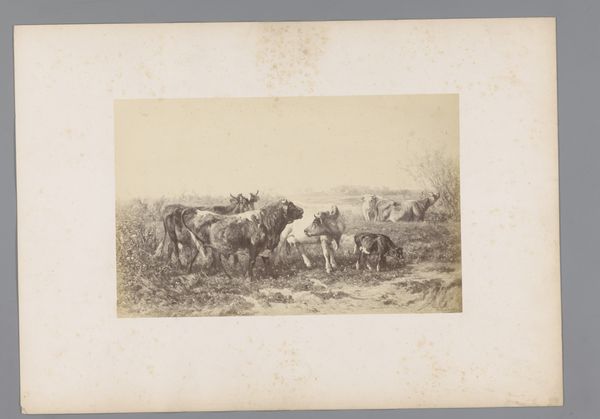
photography, albumen-print
#
landscape
#
photography
#
orientalism
#
albumen-print
Dimensions: height 22 mm, width 277 mm, height 277 mm, width 367 mm
Copyright: Rijks Museum: Open Domain
Curator: Here we have “Twee dromedarissen voor een ploeg,” which translates to "Two Dromedaries Before a Plough,” dating from between 1887 and 1900. The piece is an albumen print, a photographic process common during that period, produced by G. Lekegian & Co. Editor: My immediate impression is the subdued light; the image seems drained, bleached almost, lending it an antique and melancholy feel. It highlights labor in a stark, unromantic way. Curator: It’s fascinating how albumen prints render landscapes. Given the historical context of orientalism and colonial photography, the depiction of labor takes on a very loaded meaning. This image really participates in, and reinforces, those unequal power dynamics. Editor: Absolutely. Looking closer, I can't help but wonder about the photographer's choices. Why present this scene—presumably meant to document life in the region—with such a distanced, observational quality? What kind of relationship exists here between subject and photographer? Curator: Consider the rise of ethnographic documentation and scientific expeditions during this time. Photography was used as a tool to catalog cultures, often reinforcing Western ideas of progress and “civilization”. And this farm scene almost becomes a visual trope. The positioning of the dromedaries in relation to the plow signifies a human-animal interaction rooted in a specific economic system. It also presents certain power dynamics around race and class. Editor: It makes one contemplate the politics inherent to landscape and labor images, who gets seen and in what roles. The "Orient," packaged up for consumption. But it also suggests larger questions, about the ethical representation of cultures vastly different than one’s own. Curator: Yes, it’s difficult to reconcile our present understandings of equity with these early photographic practices. It serves as a historical record but also a reflection on those persistent representational problems. Editor: Agreed. There's real value in remembering images like these exist, if we can use them as critical tools for how we see ourselves now.
Comments
No comments
Be the first to comment and join the conversation on the ultimate creative platform.
